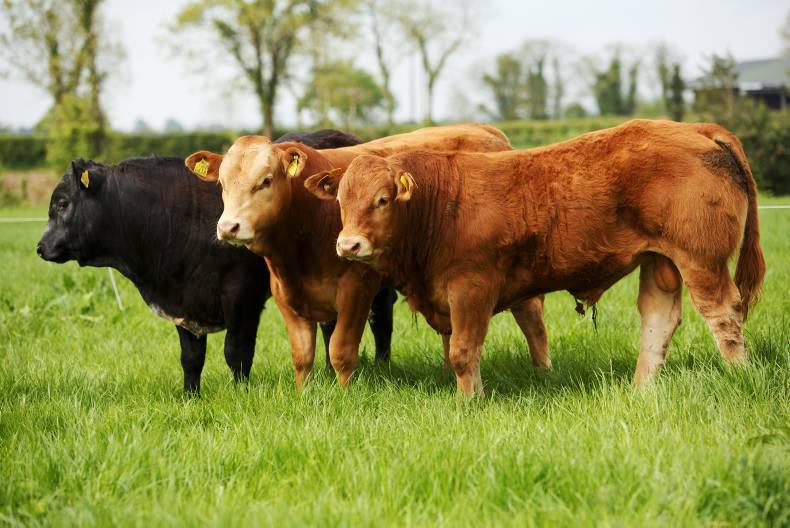The absence of northern buyers at marts is likely to have an impact on the weanling trade this autumn.
Northern Irish buyers normally add an extra presence around the ringside, boosting prices for suckler-to-weanling farmers. Buyer profile is usually a broad mix of farmers buying weanlings to finish late next year to larger feedlot operators operating on contracts. Marts operating in the border area will undoubtedly be most affected.
A number of mart managers told the Irish Farmers Journal they would be concerned about how the trade will unfold. With cattle sales currently in off-peak mode, numbers are expected to start increasing over the coming weeks as autumn- and early spring-born calves come out for sale. Exchange rate and continuing issues over country-of-
origin labelling are the two main reasons that will see fewer buyers coming from north of the border. Last autumn, the euro exchange rate was £0.71 and at one point in late August, it fell to £0.69.
This put Northern Irish farmers in a strong position when competing with their southern counterparts for weanlings. However, with the exchange rate now at £0.83, any advantage has been wiped out as ROI cattle are more expensive to farmers working in sterling.
A number of larger finishers operating in NI told the Irish Farmers Journal they are reluctant to buy ROI cattle due to added expense. Processors supplying leading UK retailers continue to reject nomad cattle (ROI born and UK slaughtered) but have been able to supply wholesalers and the catering trade.
Uncertainty over Brexit has discouraged Northern Irish finishers in case they now encounter difficulties in getting these cattle slaughtered also. However, it must be stated that the domestic mart trade has been relatively stable this year. Prices have been buoyant as tight supplies of finished cattle underpinned the live trade. A strong domestic trade will put pressure on live exporters to source suitable weanlings for shipping to continental feedlots.
With Italian beef prices for an R3 bull currently running 5c/kg down on Irish beef prices and Spanish prices trailing by a further 20c/kg, live exporters will be under buying pressure this autumn also.
But with domestic cattle numbers in the 24 to 36 month age bracket down 44,000 head and the possibility of cheaper feed, there may be a possible surge in demand for Irish weanlings from feedlot agents.
The absence of northern buyers at marts is likely to have an impact on the weanling trade this autumn.
Northern Irish buyers normally add an extra presence around the ringside, boosting prices for suckler-to-weanling farmers. Buyer profile is usually a broad mix of farmers buying weanlings to finish late next year to larger feedlot operators operating on contracts. Marts operating in the border area will undoubtedly be most affected.
A number of mart managers told the Irish Farmers Journal they would be concerned about how the trade will unfold. With cattle sales currently in off-peak mode, numbers are expected to start increasing over the coming weeks as autumn- and early spring-born calves come out for sale. Exchange rate and continuing issues over country-of-
origin labelling are the two main reasons that will see fewer buyers coming from north of the border. Last autumn, the euro exchange rate was £0.71 and at one point in late August, it fell to £0.69.
This put Northern Irish farmers in a strong position when competing with their southern counterparts for weanlings. However, with the exchange rate now at £0.83, any advantage has been wiped out as ROI cattle are more expensive to farmers working in sterling.
A number of larger finishers operating in NI told the Irish Farmers Journal they are reluctant to buy ROI cattle due to added expense. Processors supplying leading UK retailers continue to reject nomad cattle (ROI born and UK slaughtered) but have been able to supply wholesalers and the catering trade.
Uncertainty over Brexit has discouraged Northern Irish finishers in case they now encounter difficulties in getting these cattle slaughtered also. However, it must be stated that the domestic mart trade has been relatively stable this year. Prices have been buoyant as tight supplies of finished cattle underpinned the live trade. A strong domestic trade will put pressure on live exporters to source suitable weanlings for shipping to continental feedlots.
With Italian beef prices for an R3 bull currently running 5c/kg down on Irish beef prices and Spanish prices trailing by a further 20c/kg, live exporters will be under buying pressure this autumn also.
But with domestic cattle numbers in the 24 to 36 month age bracket down 44,000 head and the possibility of cheaper feed, there may be a possible surge in demand for Irish weanlings from feedlot agents.






 This is a subscriber-only article
This is a subscriber-only article






SHARING OPTIONS: